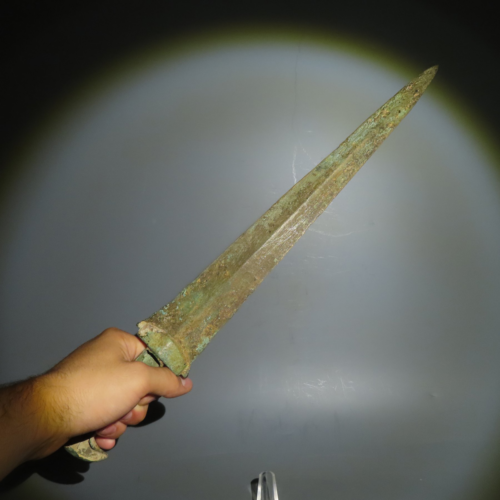








A short sword from the Lorestan region of the Middle East (present-day Iraq) dating to the 1st millennium BC. This sword stands out for its shortness, the length of the sword reaches 44 centimeters, which is quite unusual, since most ancient swords were slightly longer. This indicates that this sword was forged with a special purpose and was used for close combat. The sword has a historical and cultural significance for the history of world civilization, it testifies to the level of blacksmithing and weapon technology of ancient people, the way of life and the practice of martial arts in the society of that time. This sword is a unique historical and collectible artifact that will be a unique, exclusive exhibit in every weapon collection.
The sword is from a private collection, has a certificate of authenticity and an export license to the European Union issued by the Spanish Ministry of Culture.
Ancient Lorestan (Lurestan) is one of the oldest cradles of human civilization mentioned by various names in various historical sources, where various tribes and ethnic groups with unique cultures and languages lived. This land was rich in its natural resources, and known as the land of warlike and threatening mountaineers who regularly raided Mesopotamia.
Around the 1st millennium BC, Lorestan was part of ancient Persia and later part of the Empire that flourished in the 1st millennium BC, and the region was ruled by various Iranian dynasties such as the Medes or Achaemenids, etc.
Ancient Lorestan was famous for its bronze craft and artwork. In this region, various bronze objects were produced - weapons, pots, ritual and other items. Some of these artifacts have survived to this day and are exhibited in museums or kept in private collections. This sword has an export declaration issued by the Spanish Ministry of Culture.